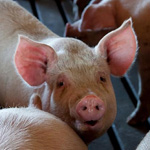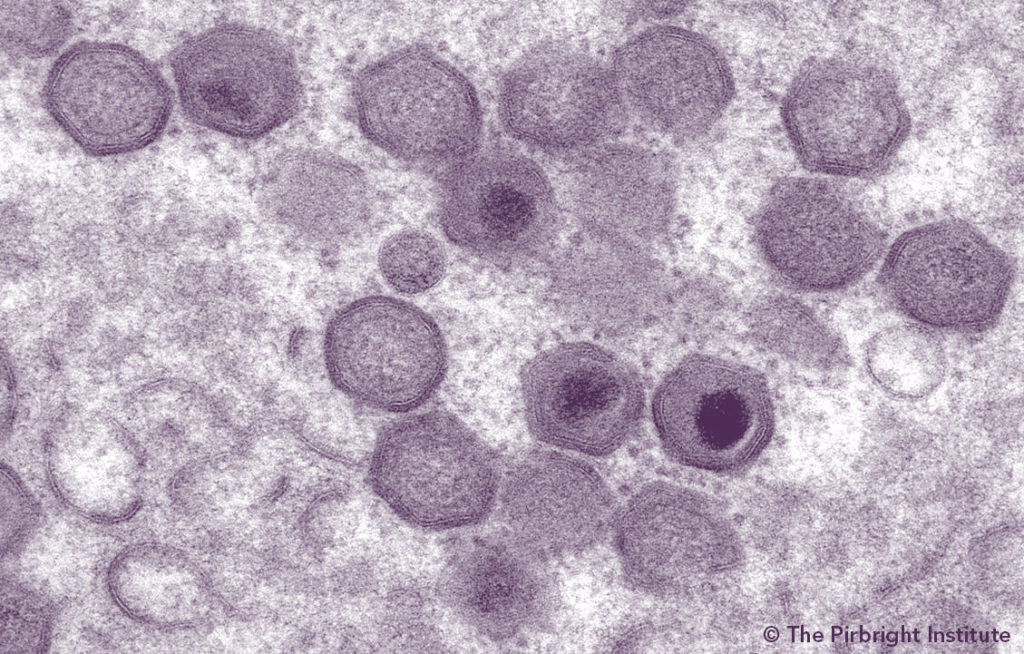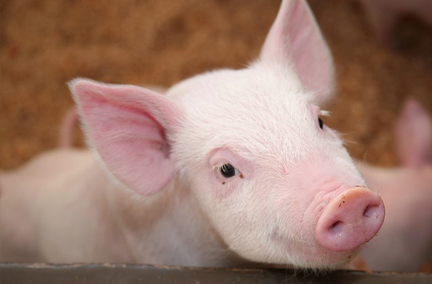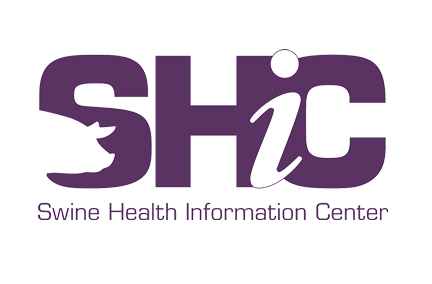
SHIC, launched in 2015 with Pork Checkoff funding, continues to focus efforts on prevention, preparedness, and response to novel and emerging swine disease for the benefit of US swine health. As a conduit of information and research, SHIC encourages sharing of its publications and research. Forward, reprint, and quote SHIC material freely. SHIC is funded by America’s pork producers to fulfill its mission to protect and enhance the health of the US swine herd. For more information, visit http://www.swinehealth.org or contact Dr. Sundberg at [email protected].

The Swine Health Information Center (SHIC) 2021 Plan of Work includes, developing additional information and tools for producers’ biosecurity and bio-exclusion protocols. A newly funded project will examine the spillover risk of pathogenic bacteria from wild mammals into pigs. And after a 2020 SHIC working group report on the use of ultraviolet light (UVC) for excluding pathogens from being introduced into herds, a call for proposals issued in April 2021 sought projects to investigate additional bio-exclusion protocols. A resulting project will assess temperature and time to inactivate porcine reproductive and respiratory syndrome virus (PRRSV) and porcine epidemic diarrhea virus (PEDV) on contaminated surfaces of materials commonly entering swine farms. Bio-exclusion projects will help SHIC fulfill its mission of protecting US herd health through examination and implementation of effective methods of emerging swine disease prevention and control.
UVC electromagnetic energy is invisible to humans and the SHIC-funded report provides guidance on how it can be used on farms for bio-exclusion. This research is now being published in the Journal of Swine Health and Production. The full report contains detailed information on the physics of UVC including wavelength details and how it inactivates pathogens. Information on dose calculations is incorporated along with specifics on measurement of UVC with a UV meter, factors affecting effectiveness, light system components, and a discussion of different light bulbs. In addition, detailed maintenance and safety requirements are included for optimum results using UVC in germicidal chambers. The report concludes with a section on best practices in the field as well as extensive tables and resources on inactivation results. A Fact Sheet on UVC use has been developed as well.
SHIC recently executed a Memorandum of Understanding with the University of Georgia Research Foundation to become a member of the Global Infectious Disease Intelligence Consortium and work with the Foundation’s Center for the Ecology of Infectious Diseases (CEID). The objective is to add another source of relevant information about existing and emerging infectious diseases, including spillover risk of pathogenic bacteria from wild mammals into pigs. The result will be better intel on possible emerging bacteria to go along with the current information on potential emerging viruses.
An Iowa State University project will involve an assessment of temperature and time to inactivate PRRSV and PEDV on contaminated surfaces commonly found in entry rooms at swine farms. More specifically, researchers will assess the efficacy of inactivating both viruses using temperatures ranging from 20ºC (68ºF) to 50ºC (122ºF) at different duration of time exposure on different surface types (diamond plate aluminum, cardboard, and plastic) typically brought into swine farms through a supply entry room. Results will be reported as the probability of inactivating the viruses at each time and temperature for each surface relative to the positive control.
These bio-exclusion projects represent a new avenue for SHIC to accomplish its goal of protecting the health of the US Swine herd. More information on all bio-exclusion research projects will be shared as results are achieved.
SHIC, launched in 2015 with Pork Checkoff funding, continues to focus efforts on prevention, preparedness, and response to novel and emerging swine disease for the benefit of US swine health. As a conduit of information and research, SHIC encourages sharing of its publications and research. Forward, reprint, and quote SHIC material freely. SHIC is funded by America’s pork producers to fulfill its mission to protect and enhance the health of the US swine herd. For more information, visit http://www.swinehealth.org or contact Dr. Sundberg at [email protected].

The Iowa State University Veterinary Diagnostic Lab (ISU VDL) received 22 porcine fetuses from six litters originating in Mexico in the spring of 2020. After extensive testing for known pathogens, metagenomics sequencing identified a new virus in the genus of Morbillivirus. ISU VDL staff named it porcine morbillivirus (PoMV) and conducted an initial study providing some insight into the outbreak. Subsequently, these researchers sought funds to isolate PoMV and determine presence/incidence of the virus in the US swine population. The Swine Health Information Center (SHIC) Monitoring and Analysis Working Group reviewed and approved the ISU VDL funding request for further study on PoMV as part of its ongoing mission to protect and enhance US swine herd health with a focus on emerging and transboundary swine disease prevention, preparedness, and response.
PoMV was determined to be the cause of fetal death, encephalitis, and placentitis among the six swine litters from Mexico. Of the 22 fetuses submitted to the ISU VDL, there was one neonatal mortality, three stillbirths, fourteen mummified fetuses, and four fetuses with moderate autolysis.
In a peer-reviewed paper on the novel PoMV finding and initial study, ISU researcher Ganwu Li and colleagues wrote, “Morbilliviruses are highly contagious pathogens. The Morbillivirus genus includes measles virus, canine distemper virus (CDV), phocine distemper virus (PDV), peste des petits ruminants virus, rinderpest virus, and feline morbillivirus.” Their diagnostic work showed PoMV is most closely related to CDV and PDV. They also reported PoMV viral RNA was detected in neurons, respiratory epithelium, and lymphocytes.
While the initial study by ISU researchers provided essential information on this newly discovered pathogen, they acknowledge much must yet be learned. In the SHIC-funded work, the opportunity for studies of viral pathogenicity, pathogenesis, and vaccine development will all be made possible. Information from the proposed epidemiology study will aid in detection and response to any future outbreaks of PoMV.
PoMV will be the topic of an upcoming episode of SHIC Talk, the Swine Health Information Center’s podcast. The episode is scheduled to be posted July 15. Guests will be Drs. Bailey Arruda and Ganwu Li, principal researchers conducting the first PoMV study at ISU. Dr. Li remains attached to the ISU VDL, Dr. Arruda has moved to US Agricultural Research Services in Ames.

The Swine Health Information Center (SHIC) learned the USDA has approved blood swabs and spots as samples for official African swine fever (ASF) testing during foreign animal disease (FAD) investigations. These are an important addition to antemortem samples previously approved since August 2018. The full list of approved samples now includes whole blood, tonsil, spleen, lymph node, spleen swabs, blood swabs and blood spots. While important additions, more work needs to be done to fully integrate blood swabs and blood spots into the ASF/CSF active surveillance program as well as the ASF Red Book. The process is ongoing. SHIC will continue to monitor developments and share progress with stakeholders interested in ASF testing protocols.
Per the USDA, NAHLN laboratories and state animal health officials have been notified that blood swabs and spots have been added as official ASF testing tissues. The Department is following up to get controlled copy protocols in place. Collaborative work continues to get the details and gaps identified and addressed.

The Swine Health Information Center (SHIC) continues to review and update Swine Disease Fact Sheets posted on its website as part of its mission to protect the health of the US swine herd. The information in updated fact sheets provides guidance and resources for producers, practitioners, and diagnosticians who are on the front lines of swine health concerns. Most recently, updated fact sheets on Nipah virus (NiV), porcine rubulavirus (PoRV), and porcine kobuvirus (PKV) were posted.
The NiV fact sheet is a major revision of the original document. Updates on diagnostics and vaccine development, in addition to epidemiology, were all incorporated. Its literature review is as current as possible, even including publications from as recent as May 2021.
NiV is a zoonotic paramyxovirus that causes serious disease in people. It is carried subclinically by pteropid bats. Pigs can become sick and act as amplifying hosts. Entry of NiV into the United States is a public health concern and could lead to swine industry losses.
PoRV is endemic in Mexico and therefore a risk for the US. It’s important for US producers and veterinarians have a central source of the most up-to-date information about this virus in case they need it, leading SHIC to develop and publish the updated fact sheet.
PoRV, also known as La Piedad Michoacán virus (LPMV), is a paramyxovirus of swine that causes CNS signs and high mortality in piglets, respiratory disease in pigs over 30 days-of-age, reproductive disease in sows and boars, and corneal opacity (“blue eye”) in pigs of all ages.
A major update of the PKV fact sheet has been completed including refreshed taxonomy, epidemiology, and diagnostics sections as well as new information on experimental infection. To date, the importance of PKV as a swine pathogen remains unclear.
Originally detected in baby pigs in Hungary in 2008, PKV is an enteric picornavirus found nearly worldwide in both in healthy pigs and pigs with diarrhea. It was first diagnosed in the US in 2013. PKV infection is most often a mild diarrheal disease with piglets of less than four weeks of age most likely to be infected. Prevalence in domestic pigs ranges from 13 to 99%. In China, PKV was implicated as the cause of diarrhea, dehydration, and vomiting in piglets which resulted in morbidity of 80 to 100% and mortality of 50 to 90%, beginning in 2010. Disease is less common in older animals.
From the updated fact sheet, “PKV is implicated as a cause of diarrhea in piglets. However, little is known about the pathogenesis of PKV. No treatments or vaccines are available. Additionally, the hardiness of kobuviruses in the environment and their association with foodborne disease warrants further investigation.” One experimental study has confirmed PKV as a cause of diarrhea and pathogenic lesions in piglets. Co-infection with PKV and other enteric pathogens of swine is very common. Transmission is thought to be fecal-oral, though other routes may be possible. Wild boars might be a source of infection for domestic swine.
The information in these and all fact sheets provides guidance and resources for producers, practitioners, and diagnosticians who are on the front lines of swine health concerns.

During its board meeting on June 11, 2021, the Swine Health Information Center (SHIC) Board of Directors voted to extend the Swine Disease Reporting System (SDRS), that makes up the Domestic Swine Disease Monitoring Report in the monthly newsletter, for another year. Launched in 2017 with SHIC funding, the SDRS has provided monthly reports on swine disease activity based on aggregated veterinary diagnostic lab (VDL) data. The reports are published in the monthly SHIC newsletter and posted on the Center’s website. This report, developed by staff from Iowa State University (ISU) with data from ISU, University of Minnesota, South Dakota State University and Kansas State University (KSU), is currently the only publicly available source of swine health information from VDLs.
These four VDLs account for more than 95% of porcine diagnostics in the National Animal Health Laboratory Network. With SHIC’s continued support, SDRS will expand to now include data on Influenza A virus (IAV) detection by PCR with IAV subtyping information, and porcine circovirus 2 (PCV2) detection by PCR. SDRS will continue to contain updated aggregated information for:
Data from SRDS addresses the US swine industry’s need for accurate, near real-time information on swine diseases, allowing stakeholders to respond precisely to endemic diseases in an efficient and timely fashion. The project also fits SHIC’s mission for foreign animal disease preparedness by having quality data on endemic swine disease activity.
Additional Board Actions
The SHIC Board heard an update on a Feed Gateway Project. Funded by the National Pork Board and the National Pork Producers Council, this project, led by KSU, has the potential to help advance feed safety in the US pork industry.
They also received preliminary findings from the key biosecurity gaps analysis in the US swine industry, a research project funded by both SHIC and the National Pork Board. This project is assessing transboundary swine disease risk of entry and spread, including African swine fever (ASF). Scheduled to be completed in July, these results will be used to help protect the US industry from ASF and other foreign animal diseases. SHIC’s 2021 Plan of Work includes possible actions to take in response to the risk assessment to continue to help protect the US pork industry from foreign, transboundary diseases.
The Board reviewed SHIC research completed and ongoing in 2021 as well as current outbreaks of PRRS in the upper Midwest. Because SHIC’s mission is to monitor, prevent and prepare for emerging diseases, PRRS, or other endemic diseases, may be addressed if they can be used as a model for an emerging disease. It was noted the SHIC Rapid Response Program and epidemiological investigations can help with, or set precedent for, emerging disease preparedness and response.
As the world deals with the COVID-19 pandemic, SHIC continues to focus efforts on prevention, preparedness, and response to novel
and emerging swine disease for the benefit of US swine health.

This month’s Domestic Swine Disease Monitoring Report shows a moderate decrease on the overall PRRS virus detection. However, detection of the PRRSV RFLP 1-4-4 L1C variant strain continues to be very active in the midwestern region, especially in the wean-to-market age category. A new tool to compare RFLP vs. lineage detections has been launched on the SDRS project website (www.fieldepi.org/SDRS). A moderate decrease in detection of PDCoV and PEDV was observed in June. In the podcast, SDRS hosts talk with Dr. Montserat Torremorell about her experience on surveillance of Influenza A, her thoughts on the PRRSV RFLP 1-4-4 L1C variant strain epidemic, and how to intervene to improve animal health.

In the Global Swine Disease Monitoring Report, read about an African swine fever (ASF) zoning agreement between Canada and Singapore. The two nations have agreed to allow for the safe trade of swine products. The 16th country in Asia has their first ASF outbreak as Bhutan reported a case of the disease to the OIE in early June. Also, information on the European Food Safety Authority’s panel’s risk assessment regarding ASF spread through outdoor pig farms is shared.
Copyright 2025 | Swinehealth.org | Website by Heartland Marketing Group